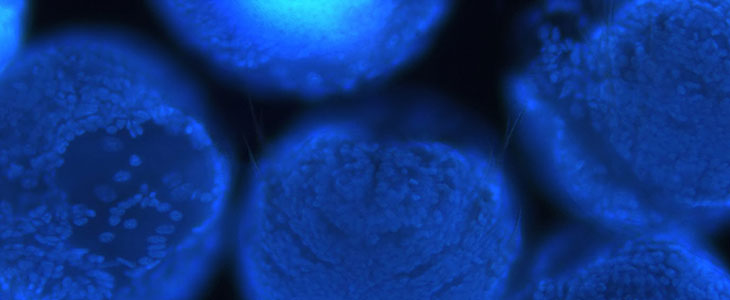
By Peter Gwynne, Inside Science
(Inside Science) – Each day small sea creatures known as plankton rise from deep underwater to the ocean's surface during the night and then return to the depths in daytime. Zoologists describe this “diel” movement, named after the Latin word for day, as Earth’s biggest migration.
The stimulus for this mass migration has long puzzled scientists. But a team from the European Molecular Biology Laboratory in Heidelberg, Germany has now discovered a likely answer: melatonin, the hormone that influences humans' sleep patterns so significantly that it's sometimes taken to relieve the effects of jet lag.
The team focused on larvae of the plankton species Platynereis dumerilii, a type of marine worm.
“This is the only plankton model species amenable to molecular development, neurobiology, and behavioral studies,” said zoologist Detlev Arendt, who led the study.
The team identified a group of brain cells in the larvae that respond to light, run an internal clock that differentiates day from night, and – most important – make melatonin during the night.
The melatonin, channeled through other types of neurons, apparently triggered the worms to begin dropping below the surface.
During the day, however, the production of melatonin stops. That seemed to cause the plankton to move back up to the ocean surface.
To confirm melatonin’s role, the team influenced the behavior pattern artificially.
“When we exposed the larvae to melatonin during the day, they switched towards night-time behavior,” team member Maria Antonietta Tosches said. “It’s as if they were jet-lagged.”
The research, reported in the journal Cell, indicates that melatonin works by influencing the physical process responsible for the larvae’s up-and-down travels.
The process relies on a series of microscopic flippers, called cilia. Arranged in a belt around each larva’s middle, they drive the larvae upward by beating up and down at a rapid rate, rather like the flapping of birds’ wings.
Once the larvae reach the surface at dusk, the beating slows down. As a result, the larvae start to sink. By morning, they have settled back down in the depths, which shelter them from the damaging ultraviolet rays that strike the water surface during daylight.
The research project started when Tosches, a postdoctoral researcher, discovered a group of specialized motor neurons in the larvae’s brains that respond to melatonin.
“We labeled the cells expressing a gene involved in melatonin synthesis in other organisms,” she explained. Then the team used a specialized technique to identify which cells in the brain were expressing the gene.
Next, using another established genetic identification process, she discovered that the neurons’ activity changes radically from day to night.
Changes in the neurons stimulated by the nighttime production of melatonin cause the cilia to take long pauses between their beats. That permits them to sink slowly to the bottom of their watery habitat.
In the absence of melatonin during daytime, by contrast, the neurons have less effect on the cilias’ rhythm. The cilia flap faster, helping the larvae to swim steadily up to the surface.
To influence the larvae’s daytime behavior, the researchers simply added melatonin to the water in which they floated in the team's marine facility. That, they found, caused them to stay in night-time mode, remaining in the depths because their cilia beat more slowly.
“So we think that melatonin is the message that these cells produce at night to regulate [the] activity of other neurons that ultimately drive day-night rhythmic behavior,” Arendt said.
“The effect of melatonin firing halting the ciliary motions during the night is quite specific to this stage and type of zooplankton,” said Hans van Haren, an oceanographer at the Royal Netherlands Institute for Sea Research in Texel. “I think the observational proof on the molecular level of such coexistence in the brain is quite new and solid.”
However, van Haren points out that more complex plankton may not descend smoothly to the depths throughout the night.
“Observations of perhaps higher-level zooplankton show rapid descent just before sunrise,” he explained. “This requires more complex melatonin firing. That’s worth investigating.”
Valuable as it is for plankton zoologists, the research also offers insights into the evolution of human sleep patterns. Indeed, the new study had the ultimate goal of understanding melatonin’s role in other animals, including humans, and how it evolved to promote sleep.
“Step by step we can elucidate the evolutionary origin of key functions of our brain,” Arendt said. “The fascinating picture emerges that human biology finds its roots in some deeply conserved, fundamental aspects of ocean ecology that dominated life on Earth since ancient evolutionary times.”
A former science editor of Newsweek, Peter Gwynne is a freelance science writer based in Sandwich, Massachusetts. Reprinted with permission from Inside Science, an editorially independent news product of the American Institute of Physics, a nonprofit organization dedicated to advancing, promoting and serving the physical sciences.



Comments